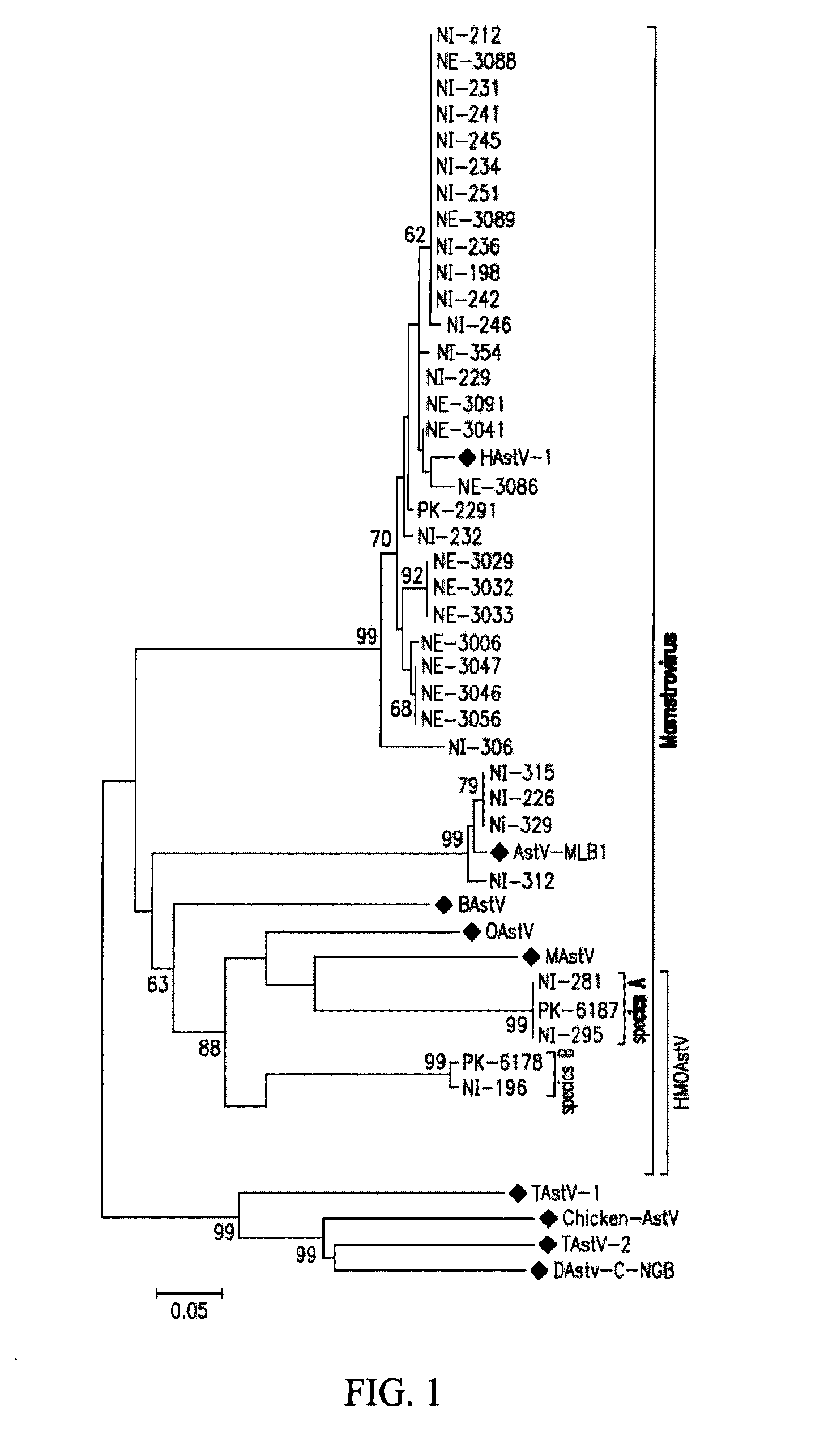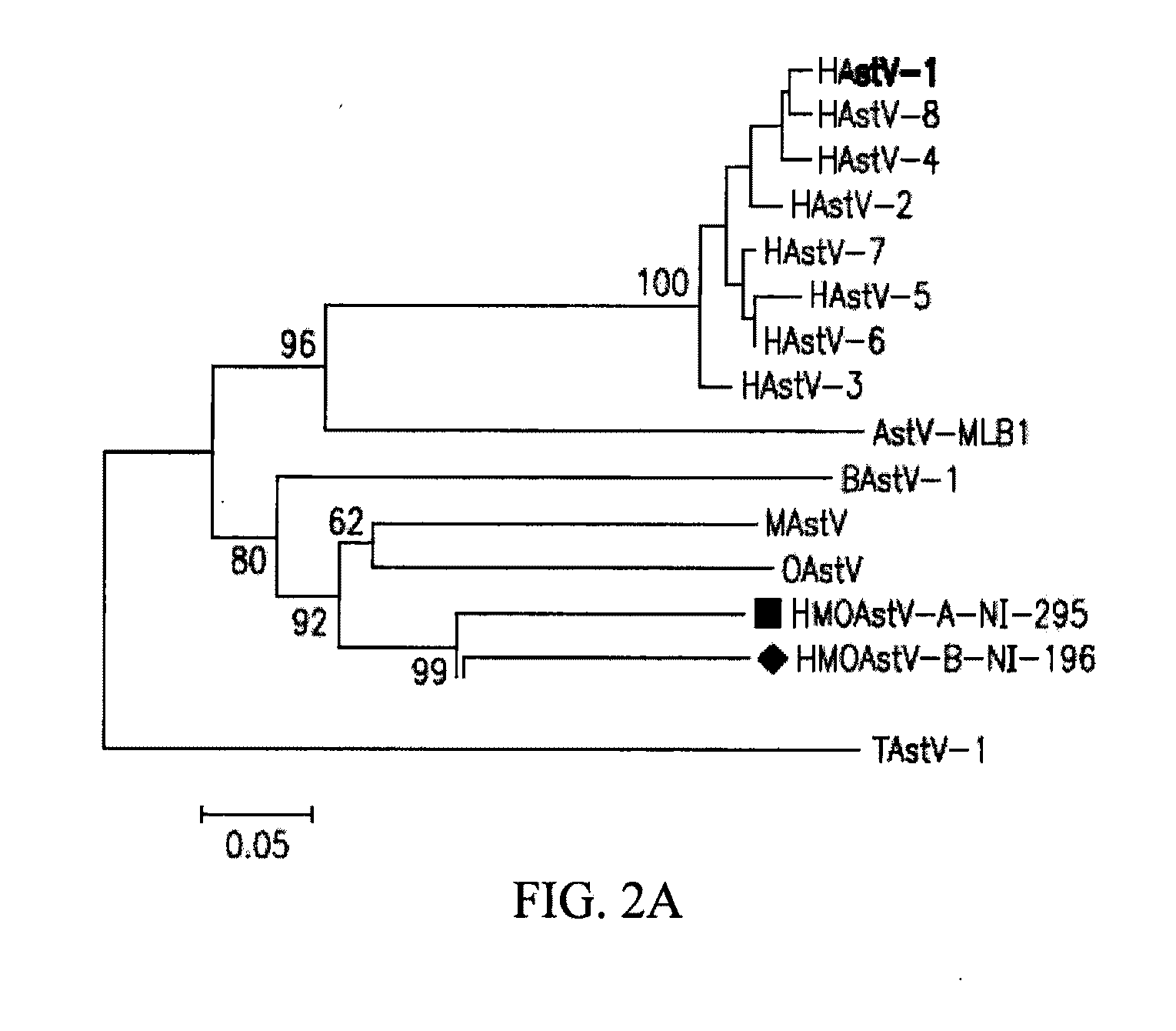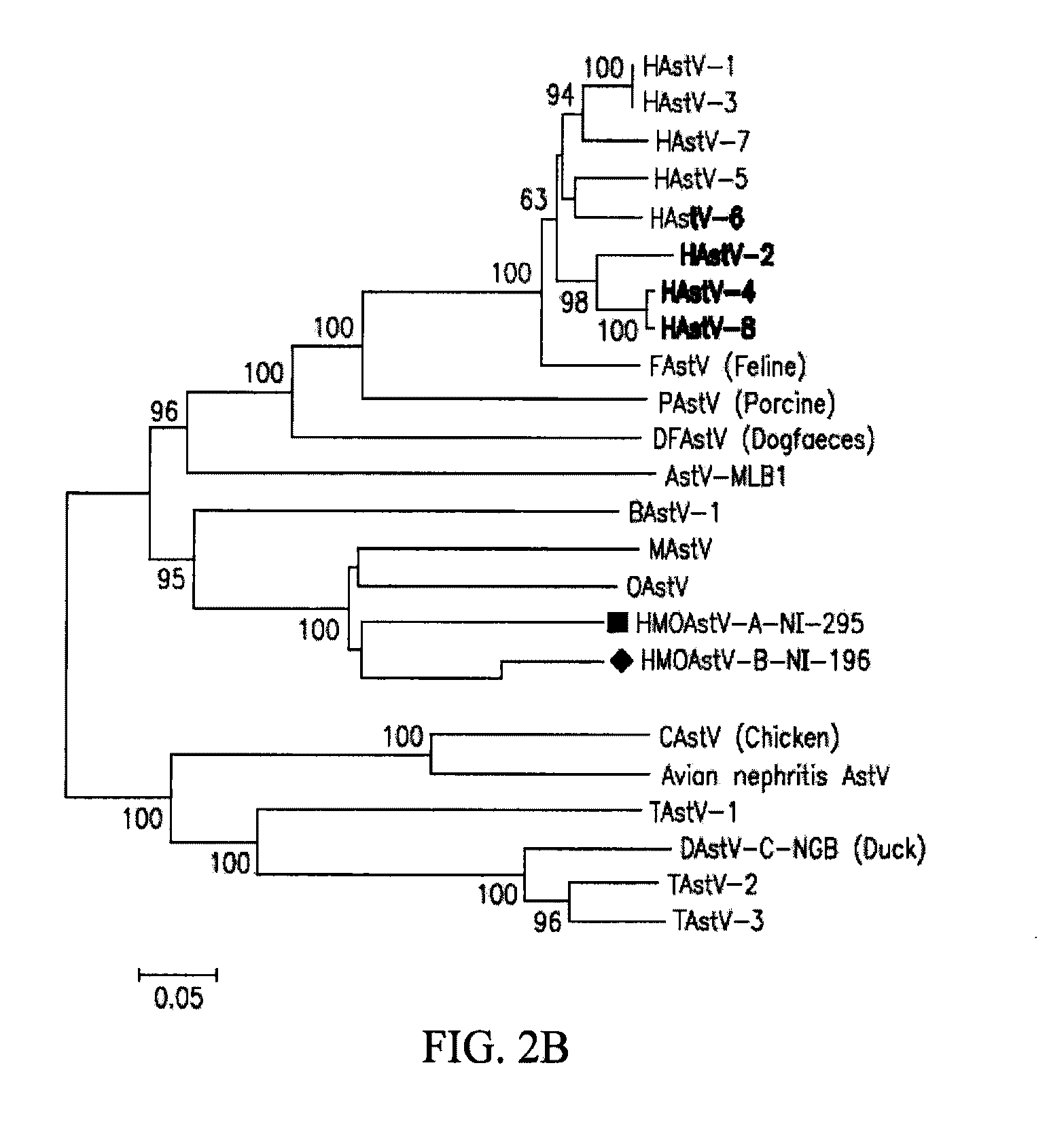Astrovirus species
a technology of astroviruses and astroviruses, applied in the field of new astrovirus species, can solve the problems of not yet identified divergent human astroviruses
- Summary
- Abstract
- Description
- Claims
- Application Information
AI Technical Summary
Problems solved by technology
Method used
Image
Examples
example
Example 1
Genomic Acquisition of New Astrovirus Species
[0202]Samples and source: All stool samples are anonymized. Stool samples from South Asian are from children <15 years old who either have non-poliovirus acute flaccid paralysis (AFP) (n=57; mean age, 54.6 months) or are healthy household contacts of AFP patients (n=9; mean age, 27 months) or unrelated healthy children (n=41; mean age, 39.8 months) collected in Pakistan or Afghanistan. Stool samples from Nigeria are also from poliovirus negative children with AFP (n=96; mean age, 29.7 months).
[0203]Astrovirus group specific PCR. Stool samples are diluted 1:5 with Hank's Buffered Saline Solution (Gibco BRL), mixed with glass beads, vigorously vortexed and centrifuged twice at 5000 rpm for 10 minutes. Clarified supernatants (140 μl) are used for viral RNA extraction using RNAeasy mini kit (Qiagen). RNA is eluted in 50 μl of DEPC-treated water, immediately mixed with 40U of Ribolock RNase inhibitor and stored at −20° C. until revers...
example 2
Classification of Astroviruses Circulating in Humans
[0207]An RT-PCR assay using primers that targets conserved motifs in the RdRp gene of diverse astroviruses (Zhu et al. (2009) J. Gen. Viral. 90:883-87) is used to screen human stool supernatants. Stools from cases of non-poliovirus AFP from Nigeria and Pakistan are initially screened. All positive pan-astrovirus PCR amplicons are then directly sequenced. Of 39 astrovirus positive samples, 27 are found to be closely related to human astrovirus (HAstV) (FIG. 1). Astrovirus MLB (AstV-MLB) is the second reported species of human astrovirus; it was described in 2008 as isolated from a stool sample of an American child with acute gastroenteritis (Finkbeiner et al. (2008) Viral. J. 5:117). Astrovirus sequences from four Nigerian children suffering from non-polio AFP are closely related to AstV-MLB (>95% nucleotide identity) and hence represents cases of AstV-MLB infection in Nigeria (FIG. 1). It is not known whether these paralyzed childr...
example 3
Acquisition of a Full HMOAstV Genome
[0210]To acquire the complete genome of an HMOAstV species, the stool samples of Nigerian patients NI-295 are subjected to highly parallel pyrosequencing. 4093 individual reads are assembled into longer sequence contigs (Victoria et al. (2009) J. Virol. 83:4642-51). Assembled contigs and singlets are then analyzed using BLASTx. In sample NI-295, three sequences, two derived from contigs and one singlet, show significant (E-score <0.001) similarity to ORFlab and at the 5′ end of ORF2 in MAstV. One of the three sequences overlapped with sequence obtained by pan-PCR. The remaining genomic sequence of HMOAstV-A-NI-295 is acquired using PCR to link the available fragments and 5′ and 3′ RACE to acquire the viral RNA extremities. Additional genomic sequences of HMOAstV-B-NI-196 are acquired using degenerate primers targeting conserved motifs in ORF2 of astroviruses and 3′ RACE.
[0211]Genomic features of an HMOAstV. HMOAstV-A-NI295 prototype is 6534 nt lon...
PUM
| Property | Measurement | Unit |
|---|---|---|
| diameter | aaaaa | aaaaa |
| Tm | aaaaa | aaaaa |
| temperatures | aaaaa | aaaaa |
Abstract
Description
Claims
Application Information
 Login to View More
Login to View More - R&D
- Intellectual Property
- Life Sciences
- Materials
- Tech Scout
- Unparalleled Data Quality
- Higher Quality Content
- 60% Fewer Hallucinations
Browse by: Latest US Patents, China's latest patents, Technical Efficacy Thesaurus, Application Domain, Technology Topic, Popular Technical Reports.
© 2025 PatSnap. All rights reserved.Legal|Privacy policy|Modern Slavery Act Transparency Statement|Sitemap|About US| Contact US: help@patsnap.com



